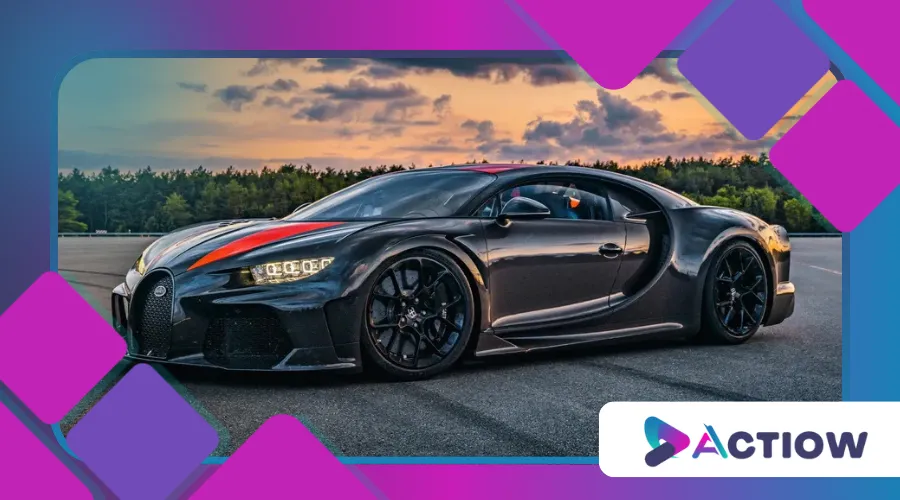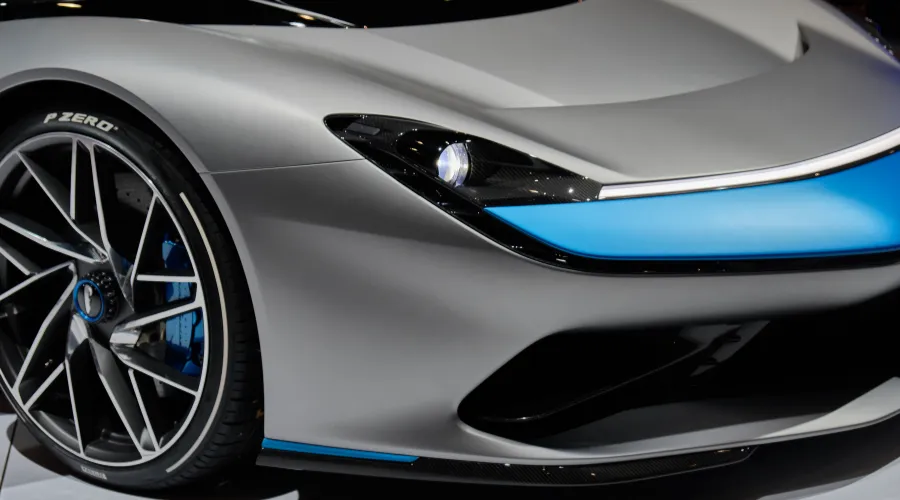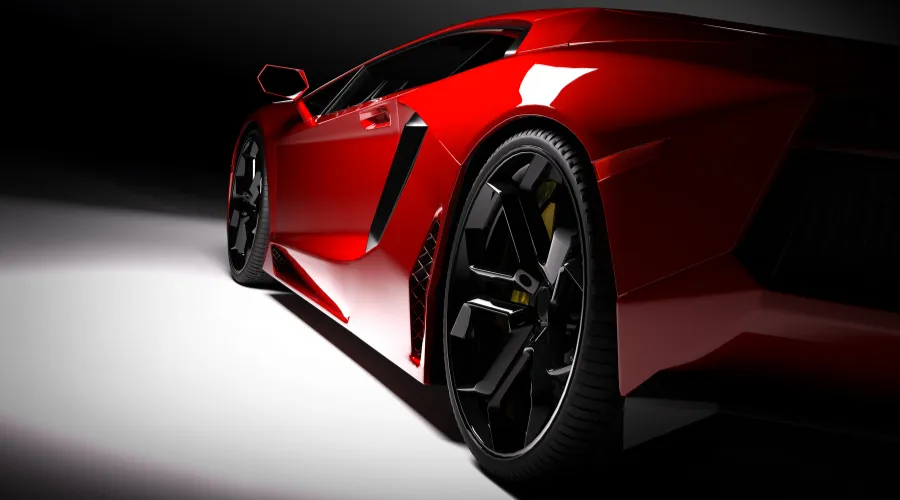Cars Built to Break Records

Anúncios
Cars built to break records are not mere vehicles; they are audacious statements of human ingenuity, engineering prowess, and the relentless pursuit of speed.
These machines, designed to shatter benchmarks and redefine what’s possible, embody a unique blend of art, science, and ambition.
From land speed records to lap times at iconic circuits like the Nürburgring, these vehicles push boundaries in ways that captivate enthusiasts and inspire innovation across the automotive industry.
Anúncios
But what drives this obsession with record-breaking?
Is it the thrill of being the fastest, the prestige of engineering supremacy, or something deeper?
This article explores the world of cars built to break records, diving into their design, technology, cultural significance, and the challenges they face in an evolving automotive landscape.
The pursuit of speed has always been a fundamental aspect of automotive culture.
It reflects not only technological advancements but also human spirit and ambition.
Record-breaking cars serve as a testament to what can be achieved when creativity meets engineering excellence.
For many manufacturers, setting a record is more than just a marketing opportunity; it’s a chance to showcase their commitment to innovation and performance.
The Anatomy of a Record-Breaking Machine
Crafting a car to eclipse existing records demands more than raw power—it requires a symphony of precision engineering.
Every component, from aerodynamics to materials, is optimized for performance.
Take the Bugatti Chiron Super Sport 300+, a hypercar that in 2019 became the first production car to surpass 300 mph, clocking 304.77 mph.
Its 8.0-liter quad-turbo W16 engine, producing 1,577 horsepower, is a marvel, but its success lies equally in its aerodynamic profile, which slices through air resistance like a scalpel.
Lightweight materials like carbon fiber and titanium further enhance its capability, reducing weight while maintaining structural integrity.
Contrast this with electric record-breakers like the Pininfarina Battista, which in 2022 set a benchmark for the fastest road-legal electric car, hitting 217 mph.
Unlike traditional combustion engines, the Battista’s electric powertrain delivers instant torque, propelling it from 0 to 60 mph in under 2 seconds.
This shift to electric power highlights a broader trend: record-breaking cars are no longer solely the domain of gasoline-powered titans.
The interplay of powertrain types—combustion, electric, and even hybrid—shows how diverse the quest for speed has become.
Table 1: Key Specifications of Record-Breaking Cars
| Car Model | Top Speed (mph) | Power (hp) | Powertrain | Year of Record |
|---|---|---|---|---|
| Bugatti Chiron Super Sport 300+ | 304.77 | 1,577 | Quad-Turbo W16 | 2019 |
| Pininfarina Battista | 217 | 1,900 | Electric | 2022 |
As technology evolves, manufacturers continue to push the limits of what’s possible.
The integration of advanced computing and simulation tools allows engineers to refine designs before physical prototypes are built.
This iterative process not only saves time but also reduces costs, making record-breaking endeavors more feasible for a wider range of manufacturers.
Moreover, collaboration across industries—from aerospace to robotics—has led to innovative solutions that enhance automotive performance.
The Cultural Cachet of Speed
Speed records are not just numbers—they’re cultural milestones.
Cars built to break records symbolize human defiance of limitations, akin to a sprinter shattering the 100-meter dash record.
They capture imaginations, spark debates, and fuel dreams.
When the SSC Tuatara claimed a controversial 316.11 mph run in 2020 (later moderated to 282.9 mph after scrutiny), it wasn’t just about the speed.
The event ignited global conversations about verification standards, engineering ethics, and the lengths manufacturers go to claim supremacy.
This cultural resonance elevates these cars beyond machinery, turning them into icons of aspiration.
Moreover, these vehicles often serve as halo cars for brands, showcasing technological advancements that trickle down to consumer models.
The hybrid system in the McLaren P1, a track-focused record-setter at circuits like Silverstone, influenced McLaren’s later road cars.
This transfer of innovation underscores a key argument: cars built to break records are not frivolous pursuits but catalysts for broader industry progress.
For more insights on the cultural significance of speed in automotive history, you can visit The Drive.
The fascination with speed transcends mere statistics; it embodies a lifestyle and a community of enthusiasts who celebrate engineering excellence.
These record-breaking vehicles often become symbols of national pride, representing a country’s technological capabilities and competitive spirit.

The Engineering Challenges
Building a car to outpace all others is a Herculean task fraught with challenges.
Aerodynamics must balance downforce for stability with minimal drag for speed—a delicate dance where fractions of a second matter.
Tires, often the unsung heroes, face extreme stresses.
For instance, the Michelin Pilot Sport Cup 2 tires on the Chiron Super Sport were custom-engineered to withstand forces at 300 mph, a feat requiring years of research.
Thermal management is another hurdle.
High-performance engines and electric motors generate immense heat, demanding sophisticated cooling systems.
The Rimac C_Two, aiming for electric hypercar records, uses liquid-cooled battery packs to maintain performance during sustained high-speed runs.
These challenges highlight why record-breaking cars are rare: they require not just money but unrelenting innovation.
Additionally, the integration of cutting-edge technology, such as predictive analytics and real-time data monitoring, has become essential.
Engineers now utilize simulations to predict performance under various conditions, allowing for more informed design choices.
This data-driven approach not only enhances safety but also contributes to achieving record-breaking speeds.
+ The History of Volvo: Safety and Innovation Since 1927
Table 2: Engineering Challenges and Solutions
| Challenge | Solution Example | Car Example |
|---|---|---|
| Aerodynamic Balance | Active spoilers, low-drag bodywork | Bugatti Chiron Super Sport 300+ |
| Tire Durability | Custom high-speed compounds | SSC Tuatara |
| Thermal Management | Liquid-cooled battery/motor systems | Rimac C_Two |
The pursuit of speed demands a holistic approach, where every aspect of the vehicle is meticulously engineered.
Collaboration between various engineering disciplines—mechanical, electrical, and software—has become crucial in overcoming these challenges.
As the automotive landscape evolves, so too do the strategies for tackling these engineering hurdles.
The Electric Revolution in Record-Breaking
The rise of electric vehicles (EVs) has redefined the record-breaking landscape.
A 2023 study by BloombergNEF noted that EVs now account for 15% of performance car sales globally, a figure projected to hit 30% by 2030.
This shift is evident in cars built to break records, where electric powertrains offer advantages like instant torque and simplified mechanics.
The Tesla Model S Plaid, for example, set a production EV lap record at Laguna Seca in 2021, leveraging its tri-motor setup for blistering acceleration.
Yet, EVs face unique hurdles in record attempts.
Battery range and weight remain concerns for sustained high-speed runs, unlike gasoline cars that can refuel quickly.
The Aspark Owl, a Japanese hypercar claiming a 0-60 mph time of 1.69 seconds, illustrates this trade-off: its lightweight design sacrifices range for speed.
This dynamic fuels an ongoing debate: can electric cars truly dominate the record-breaking sphere, or will combustion engines retain an edge for certain benchmarks?
The answer may lie in technological advancements, such as solid-state batteries, which promise higher energy density and faster charging times.
As the industry continues to innovate, the line between electric and traditional powertrains may blur, leading to unprecedented performance.
Ultimately, the evolution of electric vehicles reflects a broader shift in consumer preferences towards sustainability and efficiency.

Two Original Examples of Record-Breaking Ambition
Example 1: The Vortex V12
Imagine the Vortex V12, a fictional hypercar designed by a boutique American manufacturer in 2025.
Powered by a twin-turbo 12-cylinder engine paired with a hybrid system, it targets the production car lap record at the Nürburgring.
Its active aerodynamic wings adjust in real-time, optimizing downforce for corners and reducing drag on straights.
The Vortex V12’s carbon-ceramic brakes, inspired by Formula 1, ensure precision stopping power.
While fictional, this concept reflects the cutting-edge trends in cars built to break records, blending hybrid tech with traditional engineering.
This vehicle exemplifies how manufacturers can leverage both performance and efficiency to create a truly exceptional machine.
Furthermore, it highlights the importance of innovation in design and technology to achieve record-breaking aspirations.
Example 2: The Elara Electric
Picture the Elara Electric, a 2026 prototype from a Silicon Valley startup aiming to break the EV top-speed record.
With a sleek, teardrop-shaped body and a 2,200-hp quad-motor setup, it targets 250 mph.
Its graphene-based battery promises lighter weight and faster charging, addressing EV limitations.
The Elara’s AI-driven traction control optimizes power delivery, showcasing how software is becoming as critical as hardware in record-breaking endeavors.
This prototype illustrates the potential for future vehicles to not only challenge existing records but also redefine performance standards in the EV market.
As technology continues to advance, the possibilities for record-breaking achievements will expand exponentially.
This evolution will likely inspire a new generation of automotive enthusiasts and engineers alike.
++ The Evolution of Automotive Design: From Straight Lines to Fluid Curves
The Economic and Environmental Debate
Critics often argue that cars built to break records are extravagant, with little relevance in an era of sustainability.
The Bugatti Chiron, for instance, guzzles fuel at 8 mpg, raising questions about environmental impact.
Yet, defenders counter that these cars drive innovation.
The lightweight materials and efficient powertrains developed for hypercars often find their way into mainstream vehicles, improving fuel economy and reducing emissions over time.
Economically, these cars are niche but lucrative.
Limited-edition models like the Pagani Huayra R, designed for track records, command multimillion-dollar price tags, sustaining small manufacturers and funding R&D.
The question remains: can the pursuit of speed coexist with a greener future, or is it a relic of a less conscientious era?
As consumers become more environmentally conscious, manufacturers must adapt their strategies to align with changing values.
This shift may lead to innovative solutions that balance performance with sustainability, ensuring that record-breaking cars remain relevant in the future.
Ultimately, the automotive industry faces a crucial crossroads, where the desire for speed must be reconciled with the need for responsible practices.
The Future of Record-Breaking Cars
As automotive technology evolves, so too does the definition of a record-breaking car.
Autonomous driving systems, already tested in high-performance contexts like Formula E, could lead to AI-driven record attempts.
Imagine a self-driving hypercar navigating Le Mans at unprecedented speeds, guided by algorithms.
Meanwhile, alternative fuels like hydrogen or synthetic gasoline could bridge the gap between performance and sustainability, powering the next generation of cars built to break records.
Regulatory hurdles loom large, however.
Stricter emissions laws and safety standards may limit where and how these cars can operate.
The Nürburgring, a hallowed ground for record attempts, faces noise restrictions, pushing manufacturers to quieter electric or hybrid solutions.
These shifts suggest that adaptability will define the future of record-breaking vehicles.
Collaboration among manufacturers, regulatory bodies, and environmental organizations will be essential to navigate these challenges.
By fostering an environment of innovation and cooperation, the automotive industry can continue to push the boundaries of performance while addressing sustainability concerns.
Why Records Matter
At their core, cars built to break records are about more than speed—they’re about pushing the envelope of what humanity can achieve.
They challenge engineers to innovate, inspire enthusiasts to dream, and remind us that progress often begins with the audacious.
Like a climber scaling Everest, these cars represent the pinnacle of ambition, even if their practical applications seem distant.
In an industry increasingly focused on efficiency and autonomy, they preserve the raw, visceral thrill of driving.
So, what’s next for these automotive trailblazers?
Will electric powertrains dominate, or will combustion engines stage a comeback with sustainable fuels?
One thing is certain: as long as there are records to break, there will be cars built to break them, each one a testament to the unyielding spirit of innovation.
The future of record-breaking cars will likely be shaped by a combination of technological advancements, consumer preferences, and regulatory frameworks.
As we look ahead, the automotive landscape will continue to evolve, presenting new opportunities and challenges for manufacturers and enthusiasts alike.
Ultimately, the quest for speed and excellence will persist, driving the industry toward new heights of achievement.
